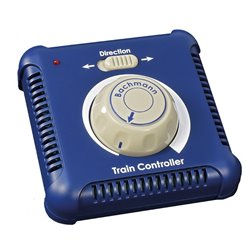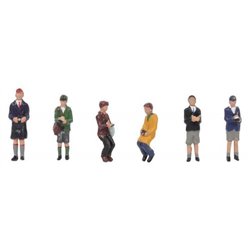Bubble cars were a single-unit first generation DMU built by British Rail in the late 1950s and 1960. Because they...
No products
Product successfully added to your shopping cart
There are 0 items in your cart. There is 1 item in your cart.
Search Tips
End of year opening times
If you select next day delivery, please note deliveries are not made on New Year's Day.
The shop in Sandown is closed on New Years's Day and closing at 2.30pm on New Year's Eve.
Tuesday 30th: 10am to 4.30pm - Wednesday 31st: 10am to 2.30pm - Thursday 1st: closed - Friday onwards: 10am to 4.30pm.
What was the Bachmann 'Blue Riband' subbrand ?
The Blue Riband subbrand was a significant step in the evolution of Bachmann Branchline, the UK division of Bachmann Industries. Introduced in the late 1990s, it was aimed at providing railway modellers with higher-quality locomotives and rolling stock that featured greater detail, improved running performance and finer moulding. Prior to this, Bachmann's models were often seen as more affordable but less detailed alternatives to competitors such as Hornby. The Blue Riband range helped change this perception by offering models that combined affordability with enhanced realism, appealing to both enthusiasts and serious collectors.
One of the key aspects of the Blue Riband models was their increased level of detail. These models featured separately fitted parts such as handrails, fine pipework and accurate livery applications that closely matched their real-life counterparts. The locomotives also benefited from improved chassis and motor designs, leading to smoother and quieter running. Many of the wagons and coaches within the range included finer wheels, more accurate printing and even interior detailing where applicable. This level of refinement marked a shift in Bachmann's approach, positioning them as a serious competitor in the UK model railway market.
The Blue Riband range also played a role in modernising the British model railway industry. At a time when some manufacturers were still producing models based on decades-old tooling, Bachmann invested in new designs that reflected contemporary standards. Their approach was influenced by advancements in manufacturing technology, including the use of CAD (Computer-Aided Design) and laser scanning of real locomotives to ensure accurate scaling and proportions. This attention to detail made the Blue Riband models highly desirable among modellers who sought realistic representations of British railway stock.
Although the Blue Riband branding was a mark of quality for over a decade, Bachmann eventually phased it out as the improvements it introduced became standard across its entire range. By the 2010s, all Bachmann Branchline models were produced to high levels of detail and performance, rendering the need for a separate subbrand unnecessary. This shift reflected a broader trend in the industry, where high-detail models became the norm rather than a premium offering. However, many modellers still regard Blue Riband models as an important milestone in Bachmann's history, as they helped cement the brand's reputation for quality.
Click here to receive the tips weekly in your mailbox. You can unsubscribe at any time.










